Norway contributes to safer and more effective handling of spent nuclear fuel in Russia
Historical archive
Published under: Bondevik's 2nd Government
Publisher: Ministry of Defence
News story | Date: 19/11/2003 | Last updated: 21/10/2006
(17.11.03) State Secretary Gunnar Heløe represented Norwegian authorities at the inauguration of the new transit storage facility for spent nuclear fuel at Atomflot in Murmansk. This facility has been financed through the Arctic Military Environmental Cooperation (AMEC) programme which involves environmental collaboration between the US Department of Defense and the Defence Ministries of Norway, Russia and the United Kingdom.
Norway contributes to safer and more effective handling of spent nuclear fuel in Russia
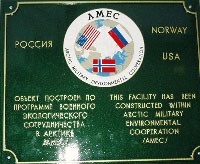 (17.11.03)
State Secretary Gunnar Heløe represented Norwegian
authorities at the inauguration of the new transit storage facility
for spent nuclear fuel at Atomflot in Murmansk. This facility
has been financed through the Arctic Military Environmental
Cooperation (AMEC) programme which involves environmental
collaboration between the US Department of Defense and the Defence
Ministries of Norway, Russia and the United Kingdom.(Picture: Plaque marking the occasion at
Atomflot)
(17.11.03)
State Secretary Gunnar Heløe represented Norwegian
authorities at the inauguration of the new transit storage facility
for spent nuclear fuel at Atomflot in Murmansk. This facility
has been financed through the Arctic Military Environmental
Cooperation (AMEC) programme which involves environmental
collaboration between the US Department of Defense and the Defence
Ministries of Norway, Russia and the United Kingdom.(Picture: Plaque marking the occasion at
Atomflot)
Spent nuclear fuel from
decommissioned nuclear submarines being dismantled in the Murmansk
area is shipped to Atomflot for onward transportation by rail. The
process of transferring the containers from the ship to special
railway trucks has in the past been a bottleneck. The new transit
storage facility can accommodate 19 transport containers and makes
it possible to receive containers unloaded from the ship on arrival
in Murmansk and to transfer them onto specially built railway
trucks on a continuous basis.
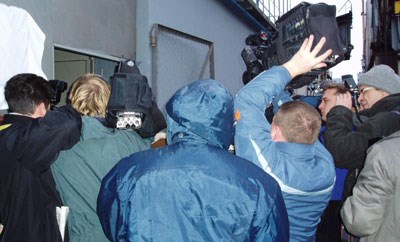
The Russian media showed a high level of interest in this
development
In order to protect the workforce,
the local population and the environment against the effects of
radiation, the Norwegian developed PICASSO software package has
been installed at Atomflot. A total of 14 Russian developed
radiation sensors are installed in various locations and are
connected to a PC network. The signals from the sensors are
automatically analysed and displayed using PICASSO. The
system will automatically trigger an alarm if the radiation at any
location exceeds a predetermined level. The overall effect is to
ensure safer and more efficient handling of spent nuclear fuel from
decommissioned Russian submarines in the general neighbourhood of
Norway’s northern borders.
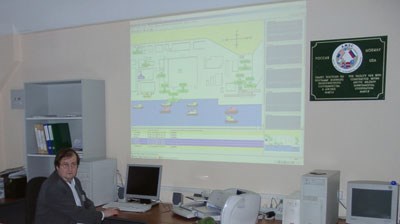
Demonstration of PICASSO
From the Norwegian side the projects have been coordinated by the Ministry of Defence and led by scientists from the Norwegian Defence Research Establishment (FFI). Personnel from the Research Institute for Energy and Nuclear Technology (IFE) in Norway have contributed additional technical expertise.
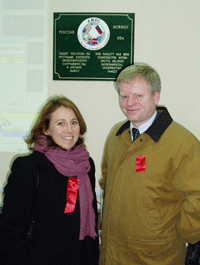
(Picture: State Secretary Gunnar Heløe and Monica Endregard
from FFI)
As State Secretary Heløe put it in
his comments on the occasion: “This illustrates that the AMEC
collaboration is on the right track and that it is yielding
concrete results in its work of cleaning up military-related
environmental threats in the North. This work is of the highest
importance and it is quite clear to me that the participating
nations are deeply committed to the further development of this
cooperative endeavour”.
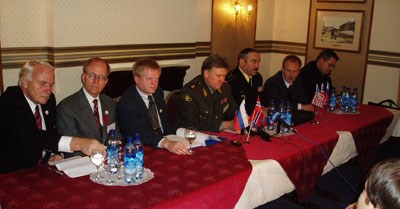 Picture from the press conference
Picture from the press conference